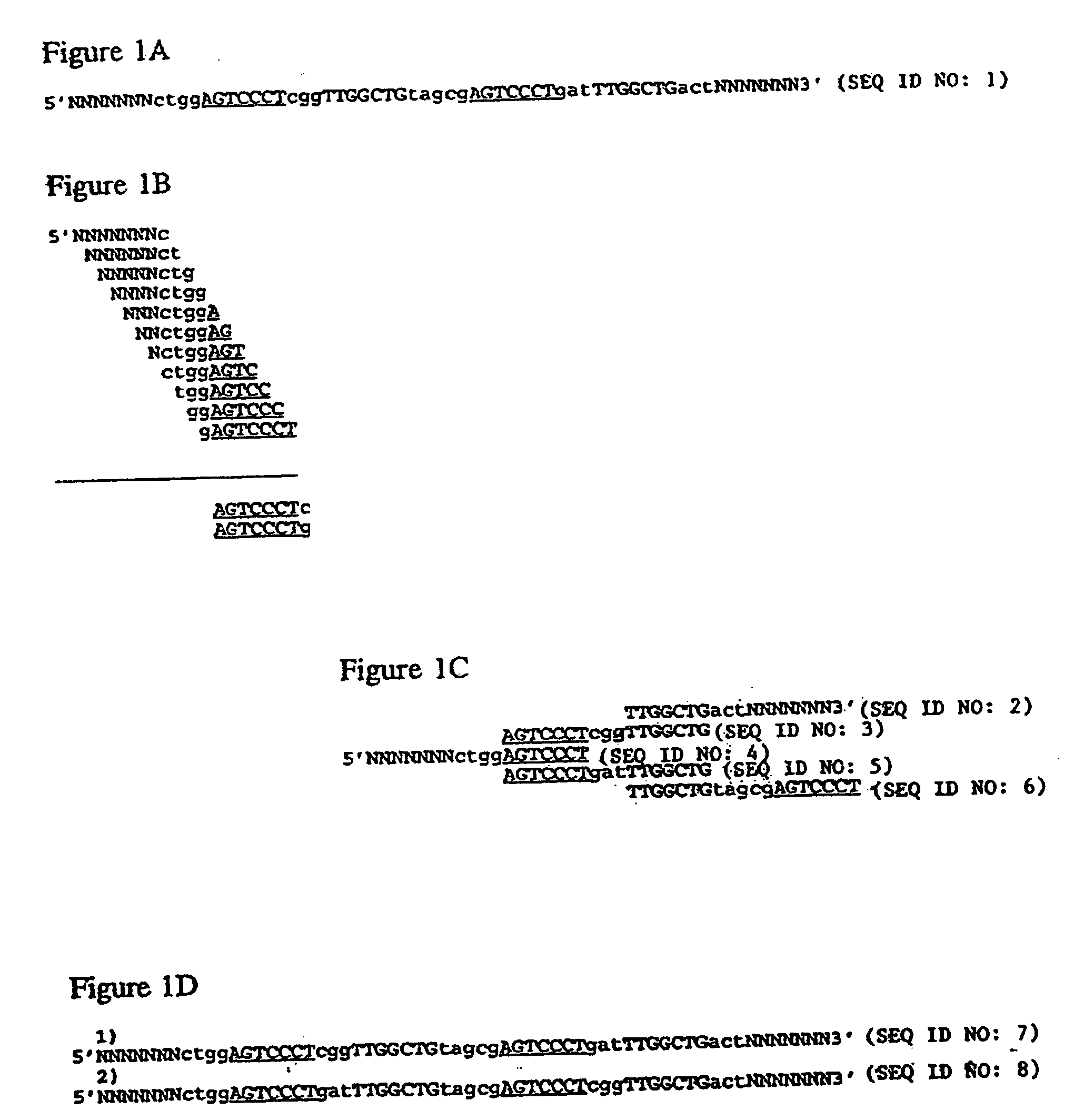Method of sequencing by hybridization of oligonucleotide probes
a technology of oligonucleotide probes and hybridization, applied in the field of molecular biology, can solve the problems of large informational complexity, high labor intensity, and inability to find substitutes, and achieve the effect of cost effectiveness, intensive manual labor, and polyacrylamide gel electrophoresis
- Summary
- Abstract
- Description
- Claims
- Application Information
AI Technical Summary
Benefits of technology
Problems solved by technology
Method used
Image
Examples
Embodiment Construction
[0044] The method of the invention of sequencing by hybridization is based on an entirely different logical principle than previous methods of sequencing which have been described above in .sctn. 2.3. Known methods of sequencing define a nucleic acid sequence in a base by base fashion that is read from the position of DNA fragments in polyacrylamide gels where the fragments are produced by base specific chemical degradation or chain termination techniques.
[0045] In contrast, the method of sequencing of the present invention is a process comprising hybridizing oligonucleotides to a target sequence, detecting the hybridized oligonucleotides, and assembling the sequence of the target from the sequence of the hybridizing oligonucleotides. The method of sequencing according to the present invention is most suitable for determining the sequence of complex nucleic acid fragments, molecules, or genomes and especially those containing one million or more nucleotide base pairs.
[0046] Accordin...
PUM
| Property | Measurement | Unit |
|---|---|---|
| concentration | aaaaa | aaaaa |
| molar ratio | aaaaa | aaaaa |
| pH | aaaaa | aaaaa |
Abstract
Description
Claims
Application Information
 Login to View More
Login to View More - R&D
- Intellectual Property
- Life Sciences
- Materials
- Tech Scout
- Unparalleled Data Quality
- Higher Quality Content
- 60% Fewer Hallucinations
Browse by: Latest US Patents, China's latest patents, Technical Efficacy Thesaurus, Application Domain, Technology Topic, Popular Technical Reports.
© 2025 PatSnap. All rights reserved.Legal|Privacy policy|Modern Slavery Act Transparency Statement|Sitemap|About US| Contact US: help@patsnap.com



